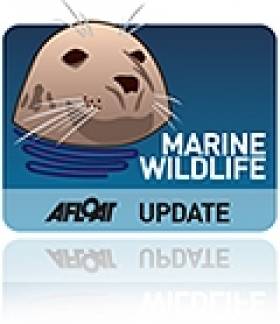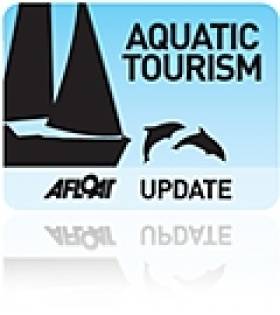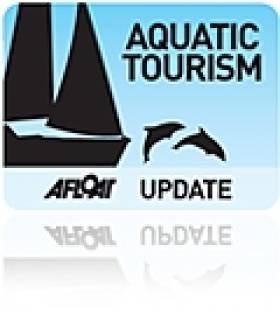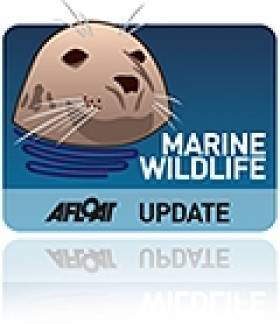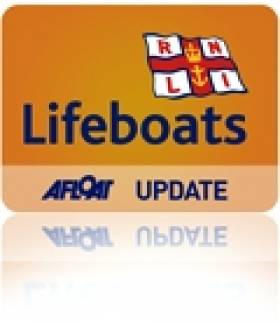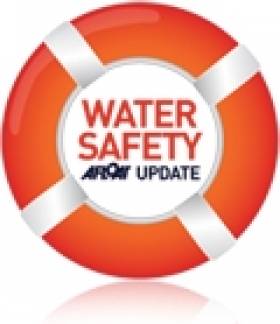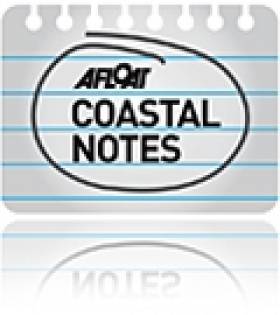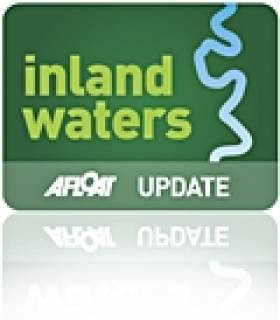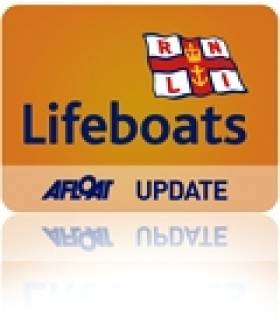Displaying items by tag: Northern Ireland
Three New MCZs On Cards To Help Protect NI Marine Wildlife
#MarineWildlife - Northern Ireland may get three more Marine Conservation Zones (MCZs) under proposals being put forward by the NI Department of Environment.
As the Belfast Telegraph reports, Rathlin, Outer Belfast Lough and Carlingford Lough could join Strangford Lough as MCZs to provide added protection for vulnerable marine species such as quahog claims and black guillemots.
Other sites at Outer Ards, the Maidens, Foyle, Dundrum, Ardglass Gullies and Red Bay are also being considered as future conservation areas.
But wildlife groups have urged Stormont to provide proper budgets for any new marine protection schemes so that they are more than just "paper parks".
The Belfast Telegraph has more on the story HERE.
Northern Ireland's Top Spots For Surfing, Birdwatching
#Tourism - Where's the best place to go surfing or coastal birdwatching in Northern Ireland? The Belfast Telegraph has got you covered.
Benone Strand was previously highlighted on Afloat.ie as a top 'coastal experience' for surfing kids, and it shows up here again in Portrush surfer Al Mennie's list of recommended spots to hit the waves for locals and visitors alike.
Portrush's East Strand and neighbouring Portstewart also feature in his list that's rounded out by two picks for experienced surfers only: Portballintrae – "by far the vest area for surfing on the north coast" – and the legendary Finn MacCool's big wave at the end of the Giant's Causeway.
The causeway also crops up in Ian McCurley's choice spots for birdwatching across NI, in particular for its "colourful stonechats perches on gorse bushes; fulmars in their cliff nest sites; peregrine falcons and gannets."
Another great seabird spotting site is Strangford Lough, which the National Trust woodland and parklands manager describes as "a unique haven for biodiversity, containing many of our rare and most threatened wildlife."
NI's Coastal Landmarks Losing Out To Republic In Tourism Marketing Says Board Chief
#Tourism - Northern Ireland's outgoing tourism chief says the likes of Galway Bay are getting too much exposure at the expense of NI coastal landmarks such as the Giant's Causeway in all-Ireland tourism marketing.
And as the Belfast Telegraph reports, Alan Clarke warns that the situation could get worse if Stormont budget cuts hit tourism funding across the region.
Clarke, who is retiring as head of the Northern Ireland Tourist Board, opined that "there has always been a tension there" in his relationship with the cross-border Tourism Ireland.
He also said that Northern Ireland "is paying beyond its share" when "we [Northern Ireland] are putting a third of the money in [to Tourism Ireland] and we are getting around 10-11% of the holidaymakers coming to the island."
The NITB chief said the North "needs to get a return on that, and that return needs a more flexible approach by Tourism Ireland in the marketplace" which could see Northern Ireland marketed more as a distinct destination for tourists.
The Belfast Telegraph has more on the story HERE.
Humpback Whales Liven Up NI's National Marine Week
#MarineWildlife - Northern Ireland's National Marine Week kicks off today (Saturday 26 July) with a 'rockpool ramble' at Groomsport in Co Down, the first in a series of marine wildlife themed events around the coast till 10 August.
Ulster Wildlife’s Living Seas staff and volunteers will be sharing their knowledge and expertise to help everyone find out more about the wonderfully varied wildlife found under our coastal waters, from tiny corals and shoals of gleaming fish, to playful seals and massive basking sharks, the world’s second largest fish.
“Many people see the sea simply as a huge expanse of water, but under the surface is a treasure trove of hidden gems, which we depend upon in so many ways," said Jade Berman, Living Seas manager with Ulster Wildlife.
“National Marine Week offers everyone the opportunity to find more to enjoy, more to learn and more to value in the fantastic marine life around our shores. Once they know what’s out there, we have no doubt that many more people will want to see our marine habitats and wildlife properly protected.”
One of the highlights this year is the Whale Workshop roadshow, which stops at Foyleside Shopping Centre for three days from tomorrow (Sunday 27 July) before moving to the Quays Shopping Centre in Newry from 1-4 August.
The Whale Workshop, which has toured internationally, lets the public get up close with life-size replicas of species such as dolphins, porpoise, seals, leatherback turtles, the aforementioned basking shark – and even a minke whale.
A complete list of events for National Marine Week can be found HERE – and if you're lucky, you might catch a glimpse of one of two humpback whales sighted off the Co Down coast in recent days.
According to the Belfast Telegraph, the first of these sightings last Sunday 20 July was only the fifth record of this species in the Irish Sea in 100 years.
A second spotting of that distinctive tail near the Copeland Islands was compared to the first by the Irish Whale and Dolphin Group's (IWDG) Padraig Whooley, who is "fairly confident" they are two different whales, according to his colleague Ian Enlander.
Whooley has much more in a detailed article on the IWDG website HERE.
RNLI Awards Highlight NI Fisherman's Rescue
#RNLI - The RNLI Annual Presentation of Awards took place last Thursday 22 May at London's Barbican Theatre, and in an unusual move the charity departed from the awards ceremony to look at the story behind one particular rescue.
On 18 September last year, Sam Cully's life was saved after the boat he was fishing in sank rapidly in Force 6 winds off the coast of Co Down.
That day RNLI lifeboat crew from Portaferry and Donaghadee, along with the Irish Coast Guard's helicopter Rescue 116, were involved in his rescue – but there were other groups and organisations behind the story.
While Cully waited for help to arrive, he was able to stay afloat wearing a personal flotation device (PFD) that he had received from a grant-aided scheme funded by the European Fisheries Fund, the Department of Agriculture and Rural Development, Asda, the Northern Ireland Fish Producers Organisation and Seafish.
Last week's awards event saw the RNLI brought everyone who was involved in saving Cully’s life together on one stage for the first time.
At the time of his rescue, Cully commented: "I was only able to swim five or 10 metres or so, and even then the wind and swell were washing me away from the shore.
"The boat went down so quickly, and I was so relieved to find the lifejacket doing exactly what I was told it would do. I cannot thank all those organisations involved enough."
RNLI chairman Charles Hunter-Pease introduced the following groups and organisations who all played a part in the rescue onto the Barbican stage: the Maritime Coast Agency’s Fishing Industry Safety Group, the Northern Ireland Fish Prodcuers Organisation, the Department of Agriculture and Rural Development, the RNLI’s Fishing Safety team, lifejacket and personal floatation manufacturers Mullion, Seafish and the Fisherman’s Mission.
The two RNLI lifeboat crews who responded to the emergency after being alerted by the coastguard were Portaferry and Donaghadee RNLI and they, too, were represented.
Coxswain Philip McNamara was present from Donaghadee lifeboat station and Portaferty RNLI were represented by deputy launching authority Lennie Lawson, shore crewmember Graham Edgar and lifeboat crew Marko Petrick, Sinead Breen and Paul Mageean. Luke Murphy, who was also on the lifeboat crew that day, was unable to be present.
Speaking after the event, Donaghadee RNLI coxswain McNamara said: "It was an honour to be present at the ceremony and surrounded by so many people working together to help fishermen stay safe at sea.
"This was a life saved on the day of the rescue but Sam gave himself every chance by wearing a life jacket and being prepared. Everyone on that stage was a lifesaver."
Poraferry RNLI's Lawson added: ‘It was a very moving occasion. It was lovely to be acknowledged in such good company. So many people work behind the scenes in the RNLI to make sure our lifeboats get to sea and we all do it voluntarily.
"In this instance the number of people behind the scenes was huge. This scheme has been very important to the fishing community and it shows that by working together we can save lives."
The evening ended with an emotional video tribute by Sam Cully, who then surprised the group on stage and the audience present by coming out with his wife Marie-Clare to thank everyone present in person.
Also honoured on the Barbican stage was Howth RNLI lifeboat operations manager Rupert Jeffares, who received a Bar to the Gold Badge, the second highest honour bestowed by the lifesaving charity.
#WaterSafety - HM Coastguard has issued a safety warning over dangerous riptides along Northern Ireland's north coast this week after strong currents claimed one life and put two others at risk.
BBC News reports on the death of 25-year-old Stephen Pentony, who got into difficulty while bodyboarding off the popular surfing hotspot of Portrush in Co Antrim last Friday 16 May.
"These waters are known for rip currents," said Coleraine coastguard Chris Little, who said they "can be a very frightening experience".
Meanwhile, the Londonderry Sentinel has news of a lucky escape for two others in nearby Benone on the same day.
The two men were pulled out to sea on their personal water craft after it malfunctioned, but they managed to reach the shore with some difficulty.
One of the men was later treated in hospital.
Portrush Best For Kids In NI Surf Spot Polls
#Surfing - Two popular surfing spots on Northern Ireland's north coast have been selected as the best for kids by OutdoorNI.
According to the Coleraine Times, Alive Surf School in Portrush has been named 'Best Family Activity Provider' in the latest OutdoorNI Awards, receiving a third of all votes from Facebook users throughout December.
It marks the third year in a row that the Co Derry surf school has received the accolade, and was described by Alive Surf School owner Ricky Martin as a "fantastic achievement".
Meanwhile, the Londonderry Sentinel reports that the Long Line Surf School, just west along the coast in Benone, was named 'Best Coastal Experience' for its 'Kids Big Day Out' service.
As owner Dan Lavery explains, the day-long experience on Fridays during school holidays incorporates education with fun games and shore-based exercises, and "is all about encouraging young ones to experience surfing as a lifestyle rather than just a sport."
In other NI surfing news, the Causeway Coast Surf Club in Portrush is coming off the back of its most competitive year yet, says the News Letter.
Five national titles, and a haul of 16 medals - many in the relatively new discipline of Stand Up Paddleboard - marked the end of a "tremendous" year for the club, said chair Gerald McAuley.
"It says much for the quality of surfing here in Portrush and Northern Ireland," he added. "We hope this continues in 2014."
Locals Boast About Ireland's Coast From Belfast To West Cork
#CoastalNotes - Professional snowboarder Aimee Fuller tells the Guardian about her favourite attractions around the coast of Northern Ireland.
From the new Titanic Belfast centre to the city's renowned St George's Market, the spectacular views of Belfast Lough from the top of Cave Hill, peaceful lough-side walks in Holywood and surfing in Portrush, the English pro - who moved to NI in her teens - shows there's a lot to love about her adopted home.
Meanwhile, at the opposite end of the island of Ireland, West Cork is hailed as "a perfect place to sea-kayak, relax and drink in nature", according to the Wall Street Journal - whose writer Javier Espinoza paddles out on a coastal tour with Atlantic Sea Kayaking.
Though the area is tinged with tragedy - after last year's loss of five fishermen with the sinking of the Tit Bonhomme - there is respect and admiration for the sea, especially on a calm day when kayakers can glide from shipwrecks to forests to bird sanctuaries in a single excursion.
NI Minister Hits Back At 'Burial' Claims Over Lough Neagh Report
#LoughNeagh - Northern Ireland's Agriculture Minister has rejected claims that she has ignored the findings of a working group on the future of Lough Neagh that were submitted a year ago.
As previously covered on Afloat.ie, the report considering the future of the largest of Ireland's inland waterways has sat on minister's shelves in Stormont for almost 12 months, with fears mounting that its recommendations will never be made public.
But the Belfast Telegraph reports that Minister Michelle O'Neill has hit back at criticism from DUP members of the NI Assembly who accused her of having "buried" the report because it did not gel with her department's plans to take the lough into public hands.
"I think that there is a certain wee bit of paranoia there," said the minister regarding the DUP's comments.
She also said that her "sole focus throughout all this work has been on unlocking the potential of Lough Neagh", adding that she had only recently been presented with new research commissioned by Culture and Leisure Minister Caral Ni Chuilin that would add context to last year's working group findings.
The Belfast Telegraph has much more on the story HERE.
#RNLI - Enniskillen RNLI will host the revived Castle Island charity swim and family fun morning in Enniskillen, Co Fermanagh on Sunday 11 August.
The swim traditionally took place each year with the support of the Blake family.
And Enniskillen RNLI have hailed as a "great honour" the opportunity for its local volunteer crew to revive the swim in association with sponsors Blakes the Hollow, Western Cars and The Print Factory.
The 750m swim on Lough Erne is open to swimmers of all ages either individually or in small groups such as youth clubs, sports clubs or simply groups of friends.
Enniskillen RNLI says the emphasis for this swim is for everyone to have fun and for that reason, if required, novice swimmers may complete the swim in a well-fitted lifejacket or buoyancy aid but must be confident that they can complete the distance.
Lifeboat crew not swimming themselves will also be present on the day to provide safety cover for the event.
Registration for the swim will take place at 12 noon on the day, followed by a short safety briefing. Sponsorship forms are available by email or can be collected at The Wig & Crown, Blakes the Hollow and Western Cars. For further information contact Adrian at 07974 730456.
In other news, RTÉ Radio 1’s The Business will broadcast live from Bundoran RNLI lifeboat station this Saturday morning 3 August.
The focus of the show will be on the business of Bundoran being a seaside resort - a reputation the Donegal town has enjoyed for more than two centuries.
Speaking ahead of his visit, programme host George Lee said: "I'm really looking forward to broadcasting from Bundoran, particularly on a bank holiday weekend. I'm hoping to experience lots of surfing, slots machines and ice-creams.
"On the show we'll be looking back at the heyday of the dancehalls, we'll be joined by Bundoran regular Ramona Nicholas from Dragon's Den, we'll be speaking to two men making money from oil exploration and lots, lots more."
The Business is broadcast Saturday morning at 10am on RTÉ Radio 1.



























